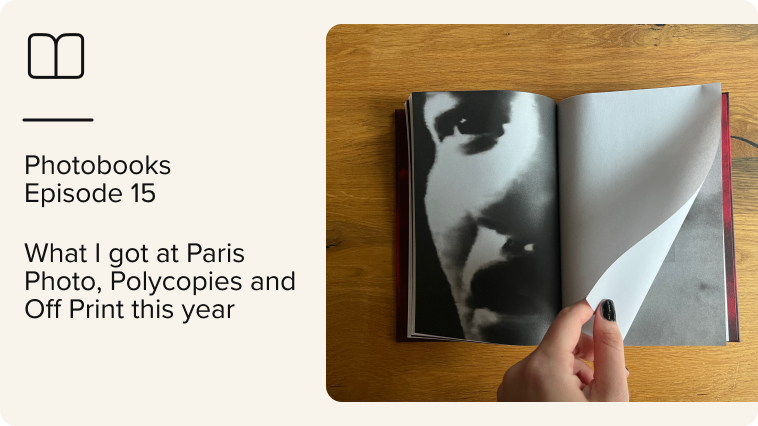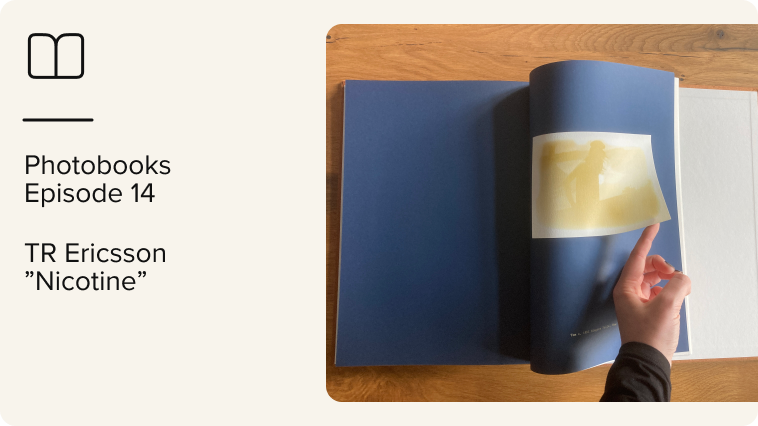Creating captivating portrait photos goes beyond just pointing a camera and clicking the shutter. It’s about capturing the essence of a person, their personality, and a fleeting moment in time.
Whether you’re a seasoned professional or just starting your portrait photography journey, honing your skills can make a world of difference.
This blog post will equip you with valuable tips and tricks to elevate your portrait photography game and ensure you consistently capture stunning results.
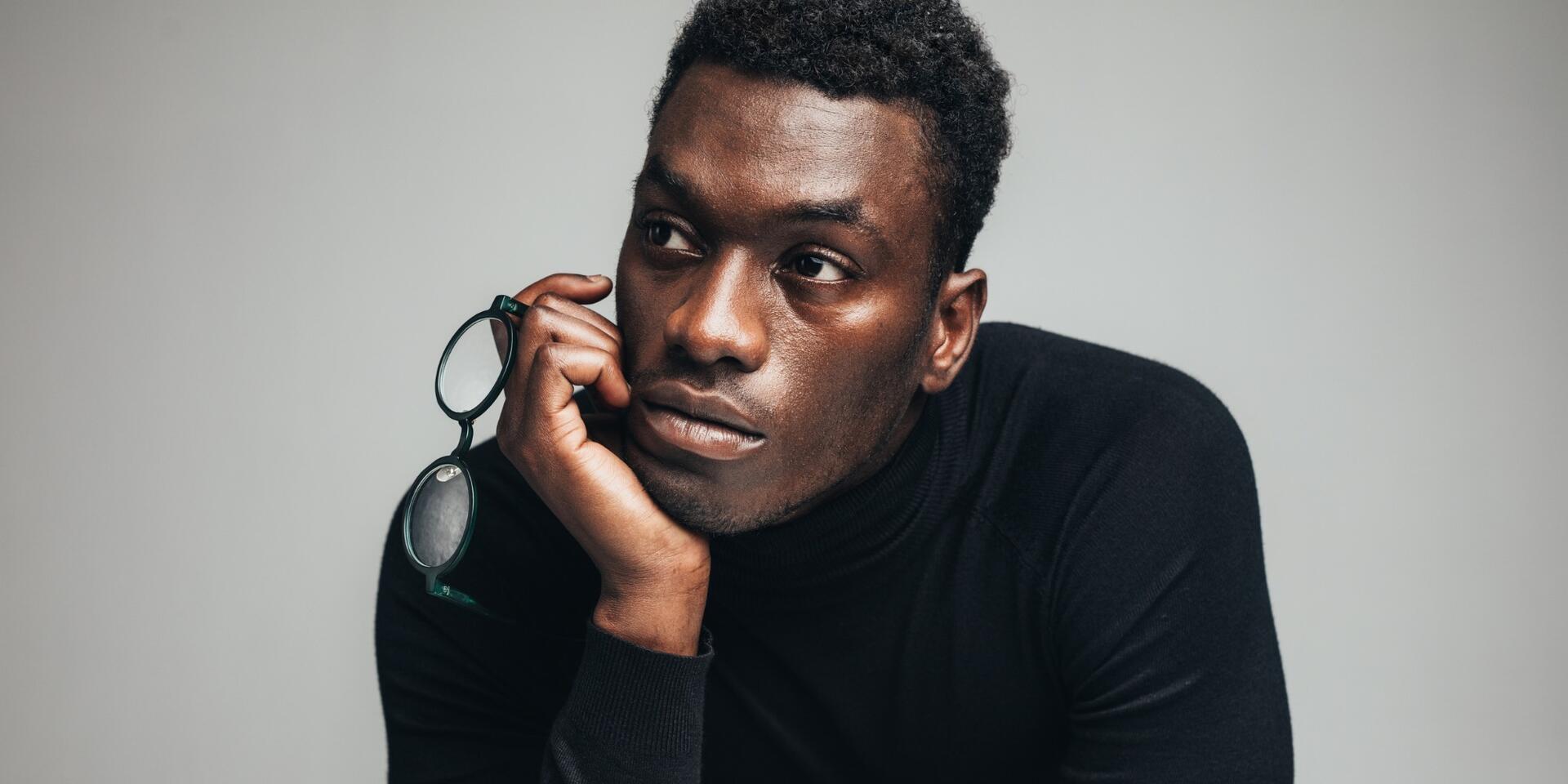
Main takeaways from this article
- Portrait photography is more than just clicking the shutter; it involves capturing a person’s essence and personality while honing essential skills to create stunning portraits consistently.
- Establishing a rapport through pre-shoot discussions, clear posing instructions, and positive reinforcement helps your portrait subject relax and reveal their authentic personality. Understanding and controlling light is essential for sculpting features and setting the mood of a portrait.
- A suitable backdrop enhances the subject’s story, while equipment choices like prime lenses and full-frame cameras impact the final image quality.
- Experimenting with unconventional angles and introducing movement can capture dynamic portraits, adding energy and showcasing different aspects of the subject.
- Utilizing the environment effectively, whether urban or natural, adds context to the subject’s personality and the narrative you’re trying to convey.
- picdrop is an online platform that provides effortless image sharing through customizable online galleries. It streamlines client communication and collaboration with features like commenting, image selection, and downloading. This professional presentation significantly enhances the client experience and aligns with your creative vision.
Top 11 tips for capturing stunning portraits
1. Guide and communicate effectively with subjects
- Pre-shoot conversations: Before the shoot, discuss the portrait’s goal. What story are you trying to tell? Is it a celebratory headshot, a relaxed family portrait, or something more dramatic? Involve your subject in the creative process.
- Clear instructions: Even the most experienced models can benefit from clear direction. Provide posing guidance in a friendly and encouraging manner. Explain what you’re looking for in terms of eye contact and facial expressions, but be open to their suggestions and natural movements.
- Positive reinforcement: Compliments are like magic during a shoot. Point out what you love about their pose, their outfit, or the way the light catches their eyes. Positive reinforcement boosts confidence, relaxes your subject, and naturally elicits genuine smiles and expressions.
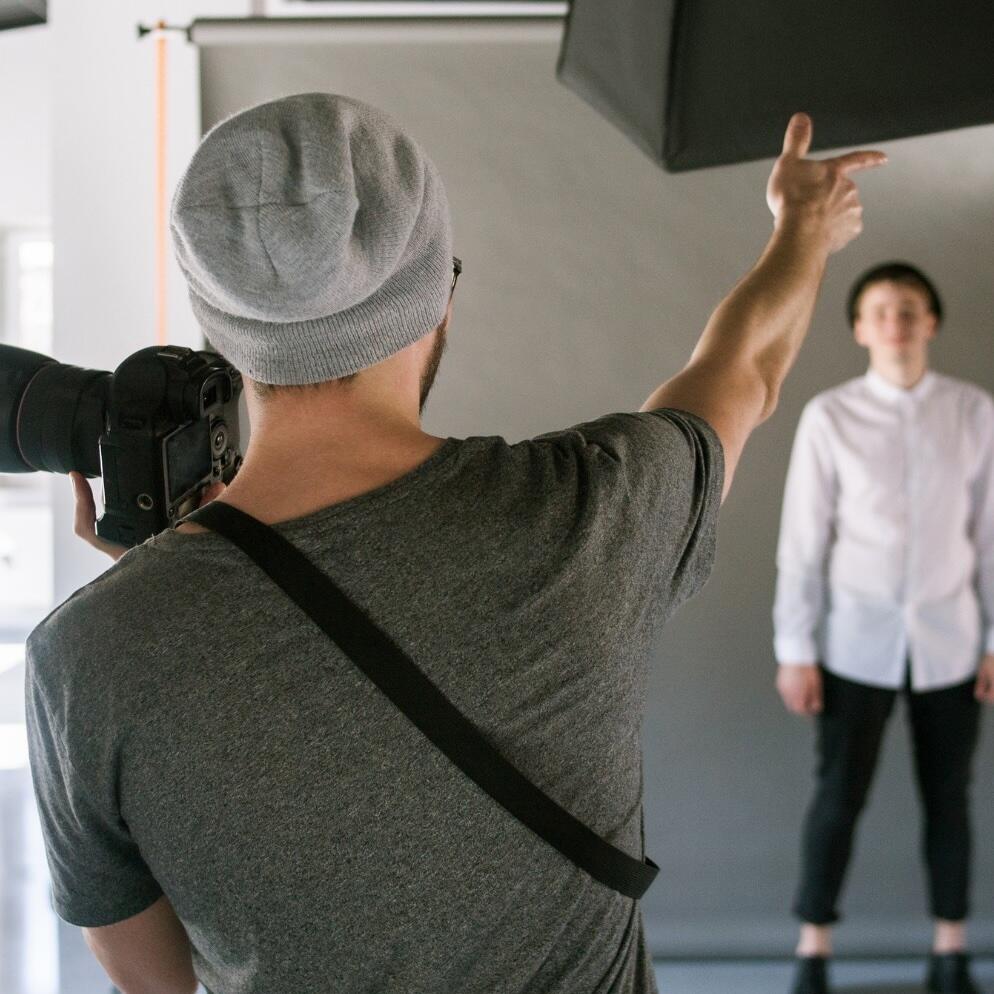
2. Perfect your lighting conditions
Lighting is the cornerstone of impactful portraiture. It sculpts features of your subject’s face, creates mood, and sets the overall tone of the image. Understanding how to use light effectively is essential for creating stunning portrait shots.
There are two main options: natural light and studio lighting. Natural light can be incredibly flattering, especially during the golden hour (the first and last hour of daylight) when the light is soft and diffused. However, it can be unpredictable and challenging to control.
On the other hand, studio setups offer complete control over lighting conditions. You can use strobes, diffusers, and reflectors to create specific effects, such as soft, diffused light or dramatic, harsh shadows. While offering greater control, studio lighting can sometimes feel sterile and require additional equipment.
By using lighting and camera settings effectively, you can capture portraits with depth, dimension, and a touch of magic.
3. Select a suitable backdrop
A well-chosen backdrop complements your subject and enhances the story you’re trying to tell. A distracting background, on the other hand, can detract from the portrait.
Here are some key considerations:
- Complementary colors: Choose a backdrop that doesn’t clash with your subject’s clothing or the overall mood of the portrait. For example, a busy patterned backdrop might overpower a subject wearing a bold outfit.
- Minimalism: Opt for clean backgrounds with minimal distractions, allowing the subject to be the focal point. This is particularly effective for headshots or close-up portraits.
- Natural settings: When shooting outdoors, utilize the beauty of natural backdrops like landscapes, parks, or urban environments. Choose a location that complements the subject’s style and the environmental portrait you’re trying to capture.
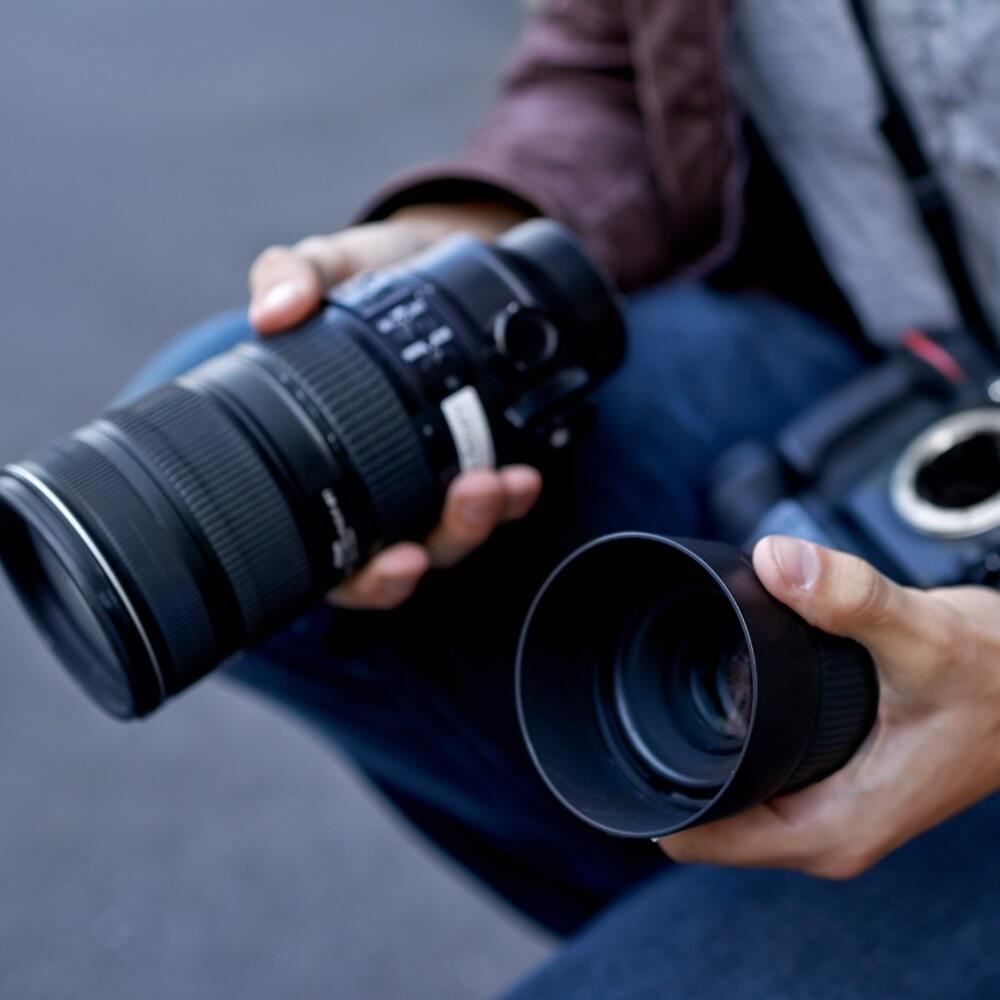
4. Choose the right equipment
When capturing portraits, the lens choice can dramatically affect the outcome of your images. Each lens brings its strengths to your photography, influencing your subject and how the background integrates into the overall composition.
For professional portrait photography, consider the lens’s focal length. Lenses around 50mm to 85mm are often favored for producing natural-looking proportions and pleasing background compression in headshots. These focal lengths help to isolate your subject from the background, reducing distractions and emphasizing facial features beautifully.
On the other hand, wider lenses (below 50mm) can introduce dynamic perspectives, especially when you’re closer to the subject. However, be cautious, as these can distort facial features if not used carefully. Wider lenses are usually best for half-body or full-body portraits.
Conversely, longer lenses (above 100mm) are excellent for creating a shallow depth of field even from afar, which brings a dreamy, blurred background effect, adding a professional polish to your portraits.
When shooting portraits, make sure you are choosing the right aperture. You don’t need to (nor should) always use the largest available aperture. Make sure that all facial features are in focus.
Choosing the best portrait lens requires understanding both your artistic vision and the practical aspects of the environment in which you are shooting. By experimenting with different focal lengths and apertures, you’ll discover which lens best suits your style and enhance your ability to capture stunning, compelling portraits.
5. Prepare for indoor and outdoor shoots
Whether you’re shooting in a studio or outdoors, preparation is the key to a successful portrait photography session. Each environment presents unique challenges and opportunities, requiring different equipment setups and camera settings to maximize your results.
Indoor portrait photography: In a studio setting, you have controlled lighting, predictable conditions, and the freedom to manipulate the environment to your liking. Use softbox lights or umbrellas to create soft, flattering light that enhances your subject’s features. Reflectors can also be handy to fill in shadows and balance the light on your subject’s face. When setting up your camera, a lower ISO is typically sufficient due to the controlled lighting conditions, and you can experiment with various apertures to achieve the depth of field you desire.
Outdoor portrait photography: Contrasting with the predictability of indoor shoots, outdoor photography can be unpredictable due to changing weather conditions, varying light, and unexpected interruptions. Here, flexibility is your greatest asset. Use natural light to your advantage by shooting during the golden hours—shortly after sunrise or before sunset—when the light is warm and diffused. A higher ISO might be necessary for lower light conditions, and always be ready to adjust your shutter speed and aperture based on the brightness of the day. Consider bringing reflectors to manage shadows and harsh light, diffusers to soften direct sunlight, and a lens hood to prevent lens flare.
Understanding and preparing for the demands of both indoor and outdoor settings can help you confidently tackle any portrait session. Remember, the right preparation eases the shooting process and enhances the quality of your final portraits, regardless of where you are.
6. Adapt poses based on body types
Creating portraits that both flatter and capture the essence of your subject involves careful consideration of poses, especially concerning different body types. By adapting poses to suit each individual, you can highlight their best features and convey their personality in a visually appealing way.
- Understanding body types: Start by observing your subject’s natural posture and body shape. This will help you choose poses that naturally complement their form. For instance, if your subject has a tall and lean body type, poses that create vertical lines and elongate the body can be particularly flattering. Conversely, for fuller figures, try poses that create angles, such as placing hands on hips or shifting weight to one leg, to define the body more distinctly.
- Pose adjustments: Adjusting poses according to the environment is also crucial. Opt for strong, straightforward poses that convey professionalism in a more formal setting, like a corporate photoshoot. Encourage more relaxed, spontaneous poses for a casual outdoor shoot to capture the subject’s ease and natural expressions.
- Engaging your subject: During the shoot, maintain a dialogue with your subject. Make them feel comfortable and involved in the posing process. This ensures they are comfortable with the poses and helps capture more genuine expressions, making the portraits more personal and lively.
By thoughtfully adapting poses to suit different body types and settings, you enhance not just your portraits’ aesthetics but also your subjects’ comfort and confidence. This approach is professional and highly considerate, fostering trust and encouraging clients to return or recommend your services.
7. Play with angles and perspectives
One of the simplest yet most effective ways to enhance your portrait photography is by experimenting with different angles and perspectives. By shifting your viewpoint, you can transform an ordinary shot into a striking portrait that captures the essence of the subject in a unique way.
- Exploring higher and lower angles: Shooting portraits from a higher angle can be particularly flattering for portraits, as it tends to make the subject look smaller and can minimize perceived imperfections. This angle is great for eliciting a sense of vulnerability or sweetness from the subject. On the other hand, taking photos from a lower angle can convey power and stature, making the subject appear larger and more imposing. This is ideal for creating a sense of strength or authority in your portraits.
- Unconventional perspectives: Don’t be afraid to move around and try out unconventional angles. Shooting from directly above can give a dramatic, artistic effect, focusing on details like the curve of a cheekbone or the shape of the eye. Side angles can introduce a profile view, adding a contemplative or introspective quality to the image.
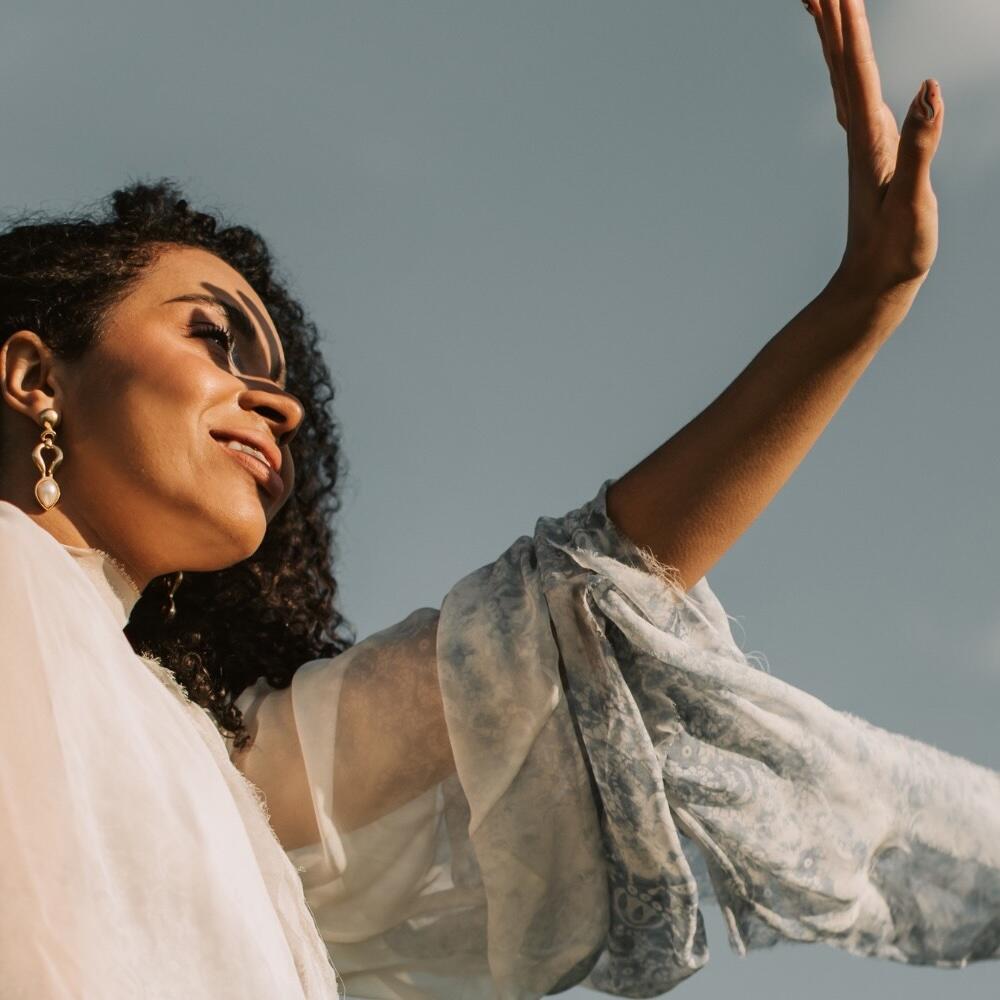
By incorporating diverse angles and perspectives into your portrait sessions, you add depth and interest to your compositions and provide fresh insights into the personality and story of your subjects. This technique elevates your photographic work and engages your viewers on a deeper level, making each portrait a unique piece of art.
8. Pay attention to clothing and props
Clothing and props are not just accessories in portrait photography; they are pivotal elements that can significantly influence the tone and feel of the final image. Thoughtful selection of these elements ensures that each portrait looks visually appealing and tells a compelling story about the subject.
- Choosing the right clothing: When guiding your subjects on what to wear, consider the theme and setting of the portrait session. Clothing that complements the environment and matches the shoot’s mood can enhance the overall aesthetic. For instance, a soft, flowing dress can evoke an ethereal quality in natural settings, while sharp, tailored suits work well for corporate portraits. Encourage colors and textures that flatter the subject’s features and skin tone, and advise against overly busy patterns that might distract from the subject’s face.Additionally, pay attention to details such as wrinkles or fluffs in the clothing, as these can detract from the polished look of the portrait and are often challenging to remove in post-production. Make sure the clothing is neatly pressed and fits well to avoid any distractions.
- Incorporating meaningful props: Props should be more than just decorative; they should resonate with the subject’s personality or the narrative of the portrait. For example, an author might hold a well-loved book, suggesting a deep connection to their craft, or a musician could be pictured with their instrument, instantly conveying their passion and skill. The right prop can transform a static image into a story, offering insights into the subject’s life and interests.
By carefully selecting clothing and props that complement and enhance the subject’s features and the portrait’s theme, you can create more than just a picture; you create a narrative portrait that invites viewers to learn about the subject. This thoughtful integration of clothing and props not only enriches the visual appeal of your portraits but also deepens the storytelling aspect, making each photo a unique reflection of the person depicted.
9. Emphasize the subject's eyes
The eyes are often said to be the window to the soul, making them one of the most expressive elements in portrait photography. Focusing on the eyes draws viewers into the portrait and enhances the image’s emotional impact. Here’s how you can emphasize the eyes effectively to make your portraits come alive.
- Focusing techniques: Ensure that the eyes are the sharpest part of your image. Use a narrow aperture to keep the eyes in sharp focus while softly blurring the background. This helps the eyes stand out as the focal point of the portrait. When positioning your camera, aligning at eye level generally offers the most engaging and natural perspective.
- Lighting to enhance the eyes: Proper lighting can significantly change how the eyes appear in a portrait. Use lighting techniques that illuminate the eyes but avoid harsh shadows that might obscure the details. A simple yet effective method is to position a light source before the subject, which creates a subtle catchlight in their eyes. This small reflection adds life to the eyes and enhances their expressive potential.
Focusing on the eyes and utilizing effective lighting techniques can create portraits that are visually striking and emotionally resonant. This approach captures the viewer’s attention and holds it, creating a powerful connection between the subject and the audience.

10. Use the environment to tell a story
A portrait doesn’t exist in a vacuum. The surrounding environment can be a powerful storytelling tool, adding context and depth to your image:
- Location as narrative: Incorporate elements of the surrounding environment to complement your subject and the story you’re trying to tell. For example, photograph a child playing outdoors amongst lush greenery to convey a sense of innocence and connection with nature. Conversely, capture a business professional standing confidently in front of a modern office building to showcase their success and drive.
- Architectural harmony: Utilize architectural features to frame your subject and enhance the mood of the portrait. A grand entrance to a historical building can add a sense of grandeur to a portrait, while a cozy cafe backdrop can create a more intimate feel.
- Urban backdrops: Leverage the unique character of urban settings. A portrait shot against a backdrop of towering skyscrapers can portray a subject’s ambition and drive, while a bustling city street can capture their energy and vibrancy.
- Background for framing: Use the environment to frame your subject naturally. Elements like doorways, windows, arches, or even natural formations can create a frame within the frame, drawing attention to your subject and adding depth to the image.
Think about using the environment to reinforce the subject’s personality or the message you want to convey. By using the environment creatively, you can transform a simple portrait into a visually compelling story that resonates with the viewer and your audience online.
11. Experiment with movement
Static poses can sometimes feel rigid or uninspired and can be boring for the subject. Capture dynamic portraits by introducing subtle or even dramatic movement:
- Natural flow: Encourage your subject to shift their weight, take a step, or interact with their environment naturally. These subtle movements can create a sense of life and energy in the final image.
- Deliberate action: For a more dynamic approach, have your subject engage in a specific action. This could be anything from tossing their hair back to walking briskly towards you.
- Professional presentation: Showcase your work in a sleek, customizable gallery that mirrors the quality and vision of your photography. Impress your clients with a polished, user-friendly viewing experience that stands out.
When it comes to showcasing your craft, picdrop is a game-changer in customer engagement. It can streamline your workflow, enhance client communication, and ultimately elevate your artistic portrait photography services. So, try picdrop for free by unlocking the one-month free trial!

